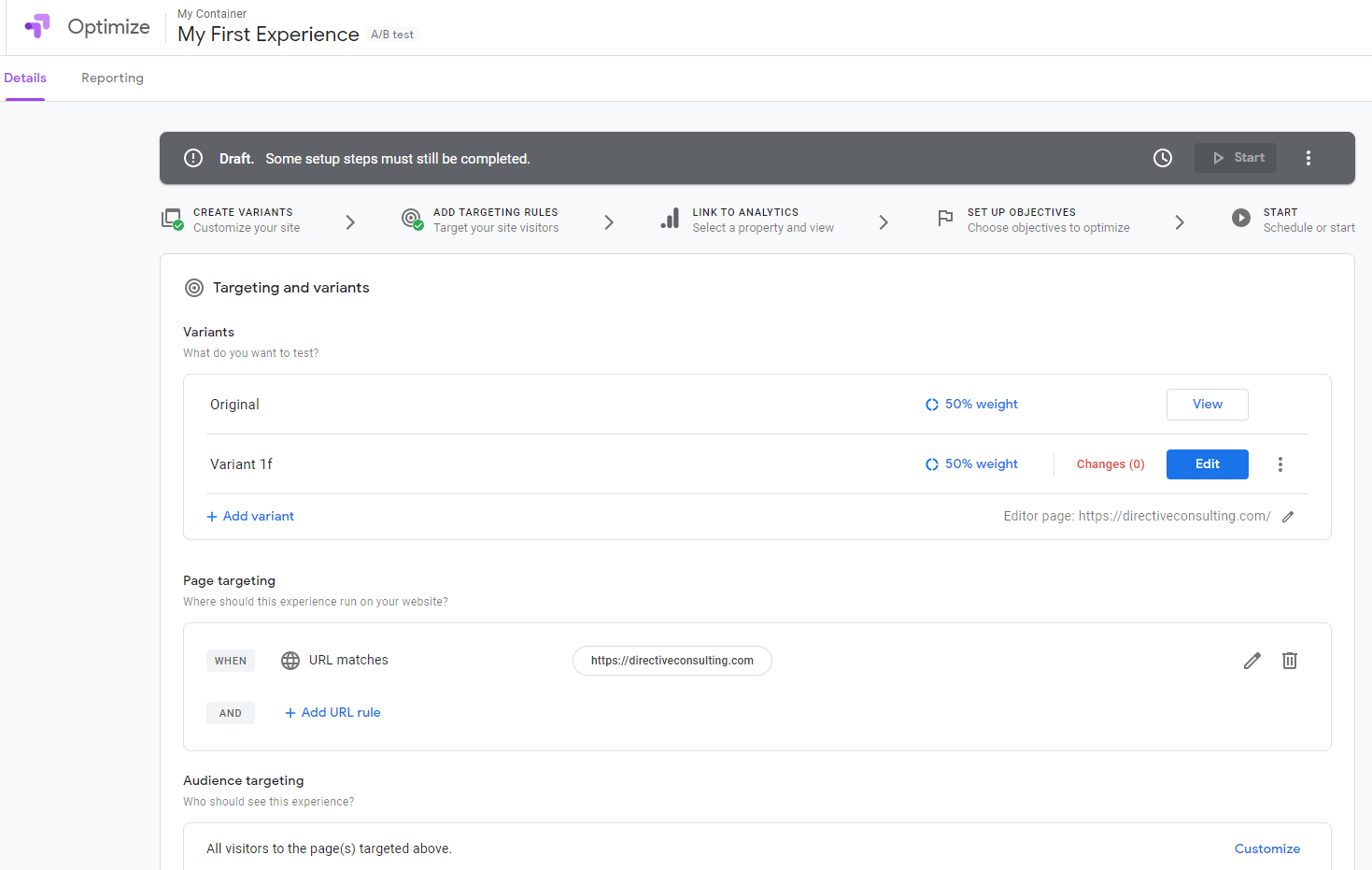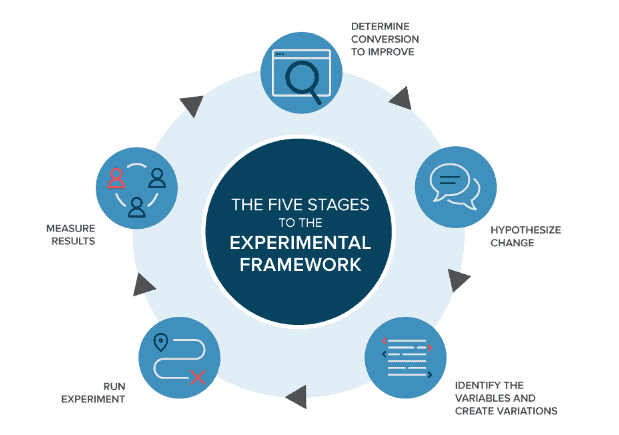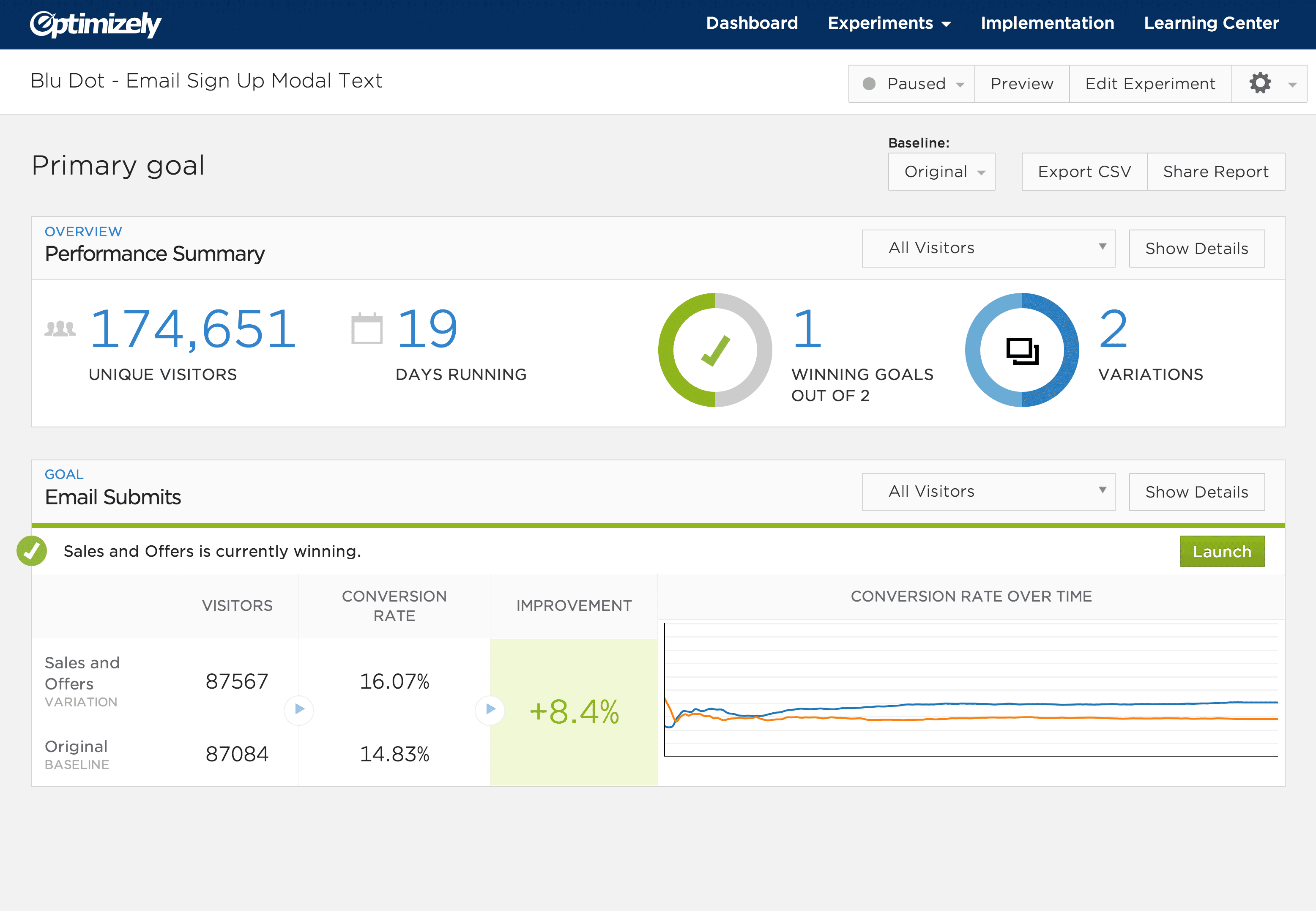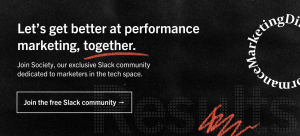A/B testing is one of the most important elements of conversion rate optimization, but what is A/B testing in digital marketing exactly?
How do tech marketers use it to increase their landing page conversion rates and achieve better campaign ROI?
To answer these questions, we’ve created this short resource on A/B testing in digital marketing. We’ll explain what it is, the most important use cases for A/B testing in tech marketing, and outline a basic process for getting started.
What is A/B Testing in Digital Marketing?
A/B testing in digital marketing is a type of content experiment where marketers create two variations of a landing page or web page to determine which one performs the best against defined marketing objectives.
The best way to understand A/B testing is to understand it in relation to the other most common types of context experiments: split tests and multivariate tests.
A split test, or split URL test, is a content experiment where marketers present two completely different landing pages to different groups of customers, then measure conversions to determine which landing page performed better.
In an A/B test, digital marketers do not use completely different landing pages. Instead, they use variations of the same page with just one element changed, such as the call-to-action, sales copy, or the color or position of an element on the page.
While split testing measures the difference in performance between two completely different pages, A/B testing tries to find performance improvements by making minor changes to individual page elements and measuring any resulting changes in clicks or conversions.
Some digital marketers also use multivariate testing experiments to improve website performance. A multivariate test is just like an A/B test, but instead of changing just one element on the page, marketers produce several variations of several different elements. These variations can be combined in different ways and presented to consumers to determine which combination of changes produces the best campaign outcomes.

Image: Software tools like Google Optimize make it easy for digital marketers to create, execute and evaluate the results of content experiments for any landing page on their website.
Five A/B Testing Use Cases
So far, our discussion of A/B testing in digital marketing has revolved around landing pages, but there are actually many different applications for A/B testing in digital marketing. Below, we highlight some of the most important use cases for A/B testing, illustrating its importance for digital marketers employing a variety of marketing tactics and techniques.
Email Marketing
In email marketing, digital marketers can employ A/B testing by creating two slightly different variations of the same email, sending them to different groups of recipients, and monitoring the results to determine which email variation produced the best overall response.
Landing Page Design
Landing page design is one of the most important areas of application for A/B testing in digital marketing. Marketers can use A/B testing software tools to change individual elements of their landing page, including the ad copy, the call-to-action text, button placement and color, lead form design, and numerous other on-page elements. A/B testing landing pages is a crucial part of the ongoing campaign optimization process for pay-per-click (PPC) advertising campaigns.
Text Ad Optimization
A/B testing can also be applied to the optimization of textual advertisements that appear at the top of Google search results as part of a paid search campaign. Advertisers can experiment with different headlines, different descriptions, ad extensions, and URL options to determine which version of their text ad results in the highest click-through rates for audiences.
Display Ad Optimization
If A/B testing can be effectively applied to text ads, then why not ads in the display ad network as well? Display advertisements contain elements like images, a company logo, some advertising copy, and a call-to-action – at the minimum. Advertisers can produce display ad variations by experimenting with different images, sales copy, or CTAs, or by changing the position of these elements in the advertisement, or simply changing the background color or button color of a CTA.
eCommerce Websites
eCommerce websites can implement A/B testing to increase conversions at every step of the customer journey. Digital marketers can modify things like product descriptions, recommendations, home page design, or the checkout process to identify the variants that maximize customer conversions.
A/B Testing Process Overview
The specific process that digital marketers use for A/B testing changes based on their chosen marketing medium. Constructing an A/B test for an email marketing campaign looks a lot different in practice than constructing an A/B test to compare the performance of product descriptions in your eCommerce store, for example.

Image: The five stages of running an A/B test content experiment. Source: Optimizely
Still, virtually all A/B testing follows a basic general process that we have outlined below.
Identify Opportunities for Improvement
The first step in the A/B testing process is to identify a landing page, marketing email, product description, or any other specific element of your marketing campaign that will be targeted for improvement. Review the marketing data that you collect to identify areas of your campaign that you think could be improved with an A/B testing content experiment.
As an example, you could choose to review Google Analytics data for landing pages on your website to determine which one has the lowest conversion rate. You might decide that the landing page with the lowest conversion rate offers the best opportunity to achieve measurable improvements with A/B testing.
Create a Hypothesis
Next, you want to create a hypothesis. Your hypothesis should describe a proposed new variant of the page and why you believe it will produce a better result in your upcoming context experiment.
For your under-performing landing page, you might reason that users are converting at a low rate because the lead generation form is too long. As a result, you might construct a hypothesis that says:
“I believe that I can increase the conversion rate on this page by redesigning the lead generation form to make it shorter and more accessible for visitors who land on this page.”
You could also decide that conversion rates are low because the CTA button is the wrong color, or because the sales copy is not persuasive enough. These are all elements that you can test, but in the spirit of A/B testing, you want to measure just one element at a time.
Craft Variants
Once you create a hypothesis around the specific element you wish to test, the next step is to actually produce a different variant of the same page that you will use in your content experiment.
You can do this manually using your website content management system, but it’s much easier to rely on a CRO tool like Google Optimize or Optimizely that helps streamline and partially automate the process of constructing test variants of your page.

Image: Optimizely is an A/B testing software tool that automatically measures the performance of your baseline page against created variants to determine which one results in the highest conversion rate.
Run a Content Experiment
Once you have crafted a variant of your initial page, it’s time to configure and run your content experiment. Conversion rate optimization software tools are useful again here, enabling digital marketers to customize which audiences land on which page or easily split traffic between multiple landing page variations.
To ensure that your results are accurate and useful, make sure that you expose a statistically significant number of users to each variation of your page.
Measure and Analyze Results
Now that you have identified a hypothesis, crafted variants, and run your content experiment live on your website, the final step is to measure and analyze the results of your experiment to determine whether it was a success.
Your A/B testing software tool will automatically measure conversions that result from both variations of your landing page, then use statistical methods to determine whether your hypothesis was proven correct.
The success of this analysis depends on the sample size of your experiment: the more users who interact with your page variations, the more reliably your A/B testing software will be able to determine whether your new variations had a genuine impact on your campaign results.
Summary
The ability to test how subtle variations in page content or design is one of the most powerful tools that marketers have for optimizing conversions and increasing revenue without having to spend more time or money driving traffic to landing pages.
For more information on conversion rate optimization, including our step-by-step guide to implementing a CRO test on your own website, check out our course on Directive Institute.
If you want to take your marketing efforts to the next level, you can count on our expert tech marketing team to get you there. We specialize in Customer Generation and have a proven track record of delivering exceptional results.
Book a call with us today to learn how you can drive meaningful growth and achieve your business goals!
-
 CEO
Garrett Mehrguth
CEO
Garrett Mehrguth
Did you enjoy this article?
Share it with someone!



